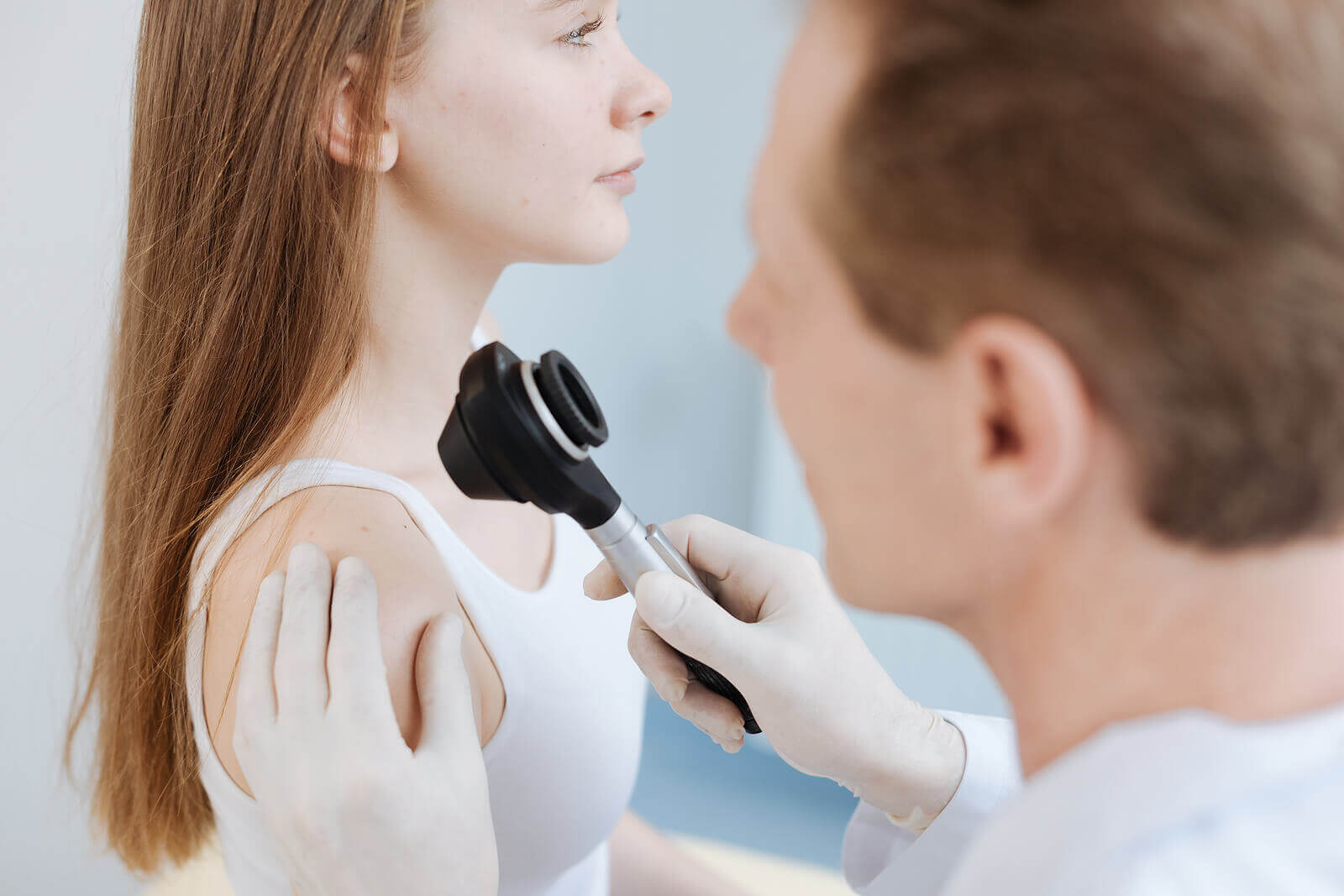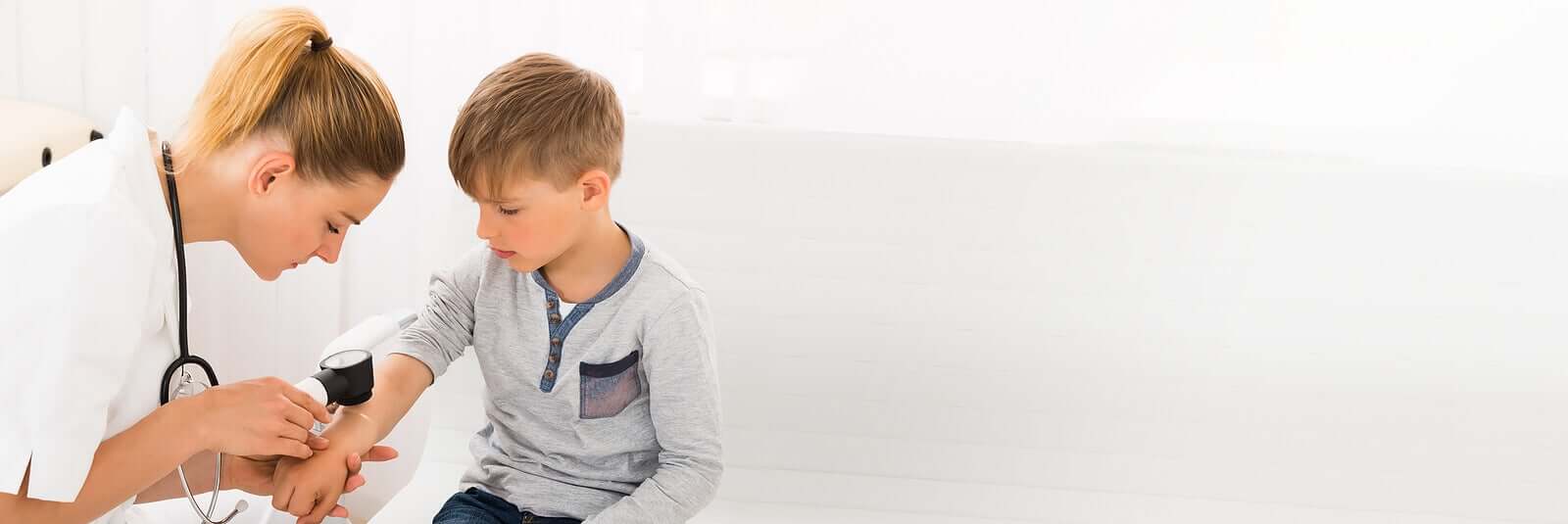Melanoma in Children and Adolescents

Melanoma in children and adolescents isn’t one of the most frequent illnesses. However, this doesn’t mean that it’s not important to take proper care in order to prevent it or to protect the skin.
In fact, children who’ve had more than three severe burns during childhood are at greater risk of developing melanoma in the future.
What is melanoma called?
Melanoma in children and adolescents is rare. It accounts for only 1.3% of all cancer cases in patients under the age of 20, according to studies published in the European Journal of Cancer.
Melanoma is the most aggressive skin cancer if it spreads throughout the body. Consequently, early detection is of great importance for its subsequent excision, treatment, and follow-up.
It’s most prevalent in adults, but also occurs in adolescents with too many moles and a history of melanoma.

Differences between melanoma and moles
It’s important to check moles once a year. A dermatologist will inspect the mole during a consultation by means of a clinical physical examination or through dermatoscopy. What characterizes a malignant lesion is whether it’s a new spot or an existing one that has changed its properties.
According to the American Cancer Society, the ABCDE rule allows, in turn, for home monitoring of lesions:
- A for asymmetry: There is no similarity between the two halves of the mole
- B for border: The borders are poorly defined or irregular
- C for color: The color is not uniform, even different shades can be observed
- D for diameter: The mole has increased in size with respect to the previous control
- E for evolution: The shape, size or color changes over time
Read also: Types of Moles and How to Identify Them
Another method for analyzing moles is the so-called “ugly duckling sign.” That is, focusing on any mole that differs in any of the characteristics from the rest of those on the child’s body.
Risk factors for melanoma in children and adolescents
There are risk factors that are modifiable and those that aren’t. Also, just because a person has one or more of the predisposing factors doesn’t mean that he or she will develop melanoma in the future.
- Exposure to ultraviolet rays
- Having many moles
- Dysplastic nevi (atypical moles)
- Dysplastic nevus syndrome
- Family history of melanoma
- Previous history of any skin cancer
- Xeroderma pigmentosum
- Light skin, light eyes, blond hair
What can you do to prevent melanoma in children and adolescents?
The vast majority of melanomas in children and adolescents aren’t preventable because they develop due to a DNA mutation. However, you can take measures and precautions to protect the skin and try to prevent melanomas.
It’s important to avoid sun exposure between 10 a.m. and 4 p.m., when the sun and its rays are most aggressive. Even if you apply sunscreen, exposure isn’t beneficial for the skin.
Sun protection in all its forms
Babies under 6 months of age shouldn’t be exposed to ultraviolet rays, even with sun protection factor applied. Anyone exposed to the sun’s rays should apply broad-spectrum sunscreen (UVA/UVB) greater than or equal to 50. In addition, the product should be reapplied every 2 hours to exposed areas of the body.
Intermittent exposure to the sun, such as during vacations, or intense sunburns during childhood carry a high risk of melanoma.
Tanning salons, sunbeds, or artificial screens aren’t recommended because of the damage they cause to the skin. The UV rays emitted by sunbeds can lead to mutations and cell death. In addition, they decrease the skin’s own immunity.
You may be interested in: Sun Protection in Children: What You Should Know

Regular skin checkups
The annual inspection of moles with the skin specialist is one of the checkups that people tend to overlook, but they’re very important. In fact, you should even perform a self-check of the skin every month at home.
Those who have a history of melanoma, have atypical moles or a family member with this type of skin cancer, should be stricter with the controls.
Therefore, during medical check-ups, the dermatologist may choose to take photographs to observe the evolution of the lesions over time.
Prevention of melanoma in children and adolescents as treatment
Childhood is a period of life in which children should be very careful about sun damage. Likewise, the burns generated here will determine skin manifestations in the future.
It’s very important to raise awareness and educate children about the importance of using sun protection from an early age. In addition, sunscreen clothing can be used, from swimsuits to hats and sunglasses.
All cited sources were thoroughly reviewed by our team to ensure their quality, reliability, currency, and validity. The bibliography of this article was considered reliable and of academic or scientific accuracy.
- Pappo AS. Melanoma in children and adolescents. Eur J Cancer. 2003 Dec;39(18):2651-61. doi: 10.1016/j.ejca.2003.06.001. PMID: 14642927.
- Indini A, Brecht I, Del Vecchio M, Sultan I, Signoroni S, Ferrari A. Cutaneous melanoma in adolescents and young adults. Pediatr Blood Cancer. 2018 Nov;65(11):e27292. doi: 10.1002/pbc.27292. Epub 2018 Jul 3. PMID: 29968969.
- Ruiz-Maldonado R, Orozco-Covarrubias ML. Malignant melanoma in children. A review. Arch Dermatol. 1997 Mar;133(3):363-71. Erratum in: Arch Dermatol 1997 Jul;133(7):833. PMID: 9080898.
- Boddie AW Jr, Smith JL Jr, McBride CM. Malignant melanoma in children and young adults: effect of diagnostic criteria on staging and end results. South Med J. 1978 Sep;71(9):1074-8. doi: 10.1097/00007611-197809000-00009. PMID: 684494.
- Bader JL, Li FP, Olmstead PM, Strickman NA, Green DM. Childhood malignant melanoma. Incidence and etiology. Am J Pediatr Hematol Oncol. 1985 Winter;7(4):341-5. PMID: 4083395.
